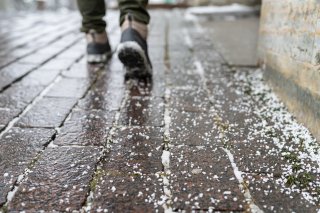Salt: Research
On this page:

- EPA Research on Freshwater Salinization Syndrome
- Drinking Water and Groundwater
- Salt in the Environment
- Source Reduction
EPA Research on Freshwater Salinization Syndrome
- Effects of Road Salts on Groundwater and Surface Water Dynamics of Sodium and Chloride in an Urban Restored Stream
- Sensors Track ‘Chemical Cocktails’ in Streams Impacted by Road Salts in the Chesapeake Bay Watershed
- Five State Factors Control Progressive Stages of Freshwater Salinization Syndrome
- Freshwater Salinization Syndrome Alters Retention and Release of ‘Chemical Cocktails’ Along Flowpaths: from Stormwater Management to Urban Streams
- Human-Accelerated Weathering Increases Salinization, Major Ions, and Alkalinization in Fresh Water Across Land Use
- Making ‘Chemical Cocktails’ – Evolution of Urban Geochemical Processes Across the Periodic Table of Elements
- Watershed ‘Chemical Cocktails’: Forming Novel Elemental Combinations in Anthropocene Fresh Waters
Drinking Water and Groundwater
- Elevated Blood Lead Levels in Children Associated With the Flint Drinking Water Crisis: A Spatial Analysis of Risk and Public Health Response
- Health Cost of Salinity Contamination in Drinking Water: Evidence from Bangladesh
- Chloride-to-Sulfate Mass Ratio and Lead Leaching to Water
- Assessing the Lead Solubility Potential of Untreated Groundwater of the United States
- Review of Implications of Road Salt Use on Groundwater Quality—Corrosivity and Mobilization of Heavy Metals and Radionuclides
- Mobilization of Radium and Radon by Deicing Salt Contamination of Groundwater
- Impact of Road Salt on Drinking Water Quality and Infrastructure Corrosion in Private Wells
- Increasing Chloride in Rivers of the Conterminous U.S. and Linkages to Potential Corrosivity and Lead Action Level Exceedances in Drinking Water
- Potential Corrosivity of Untreated Groundwater in the United States
- Groundwater Chloride Concentrations in Domestic Wells and Proximity to Roadways in Vermont, 2011–2018
Salt in the Environment
- Freshwater Salinization Syndrome on a Continental Scale
- A Review of the Combined Threats of Road Salts and Heavy Metals to Freshwater Systems
- Saltwater Intrusion Affects Nutrient Concentrations in Soil Porewater and Surface Waters of Coastal Habitats
- Salinity Increases the Mobility of Cd, Cu, Mn, and Pb in the Sediments of Yangtze Estuary: Relative Role of Sediments’ Properties and Metal Speciation
- Chloride Contributions from Water Softeners and Other Domestic, Commercial, Industrial, and Agricultural Sources to Minnesota Waters
- Salinity Increases Mobility of Heavy Metals in Soils
- Mobilisation of Heavy Metals by Deicing Salts in a Roadside Environment
- Freshwater Salinization Syndrome: From Emerging Global Problem to Managing Risks
- Salinization Triggers a Trophic Cascade in Experimental Freshwater Communities with Varying Food-Chain Length
- Methods for Evaluating Potential Sources of Chloride in Surface Waters and Groundwaters of the Conterminous United States
